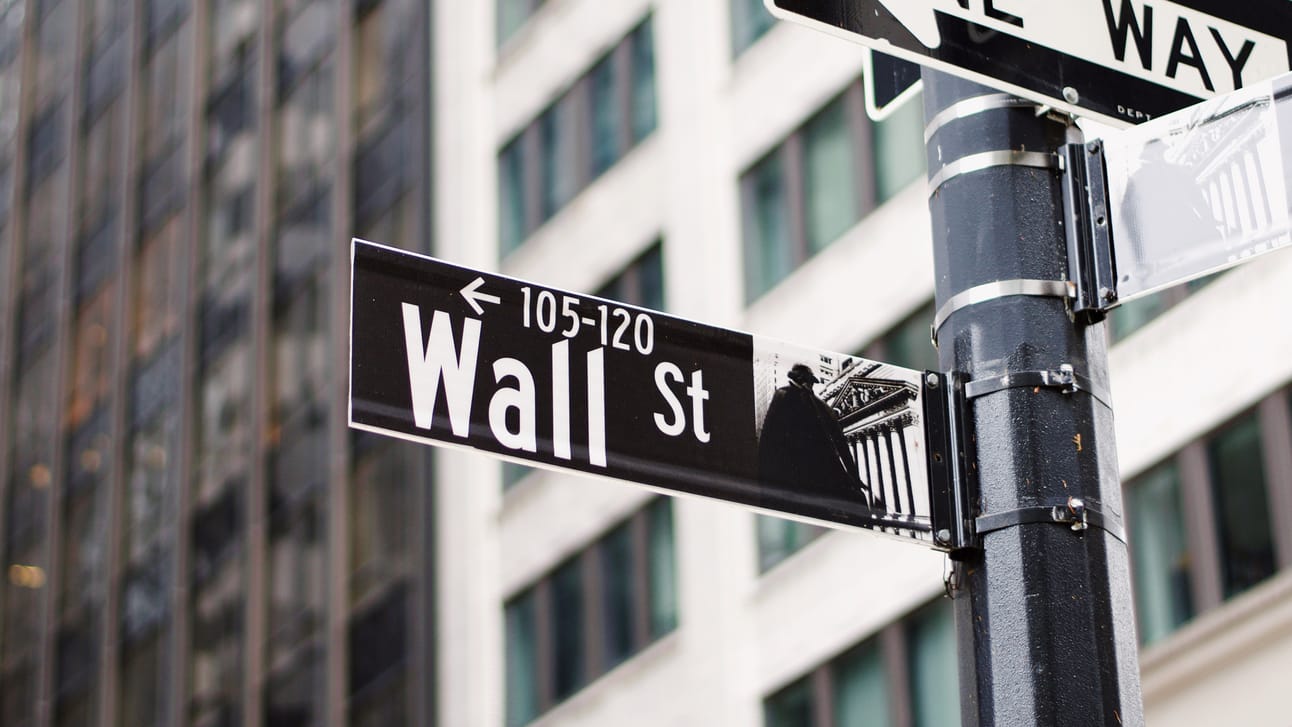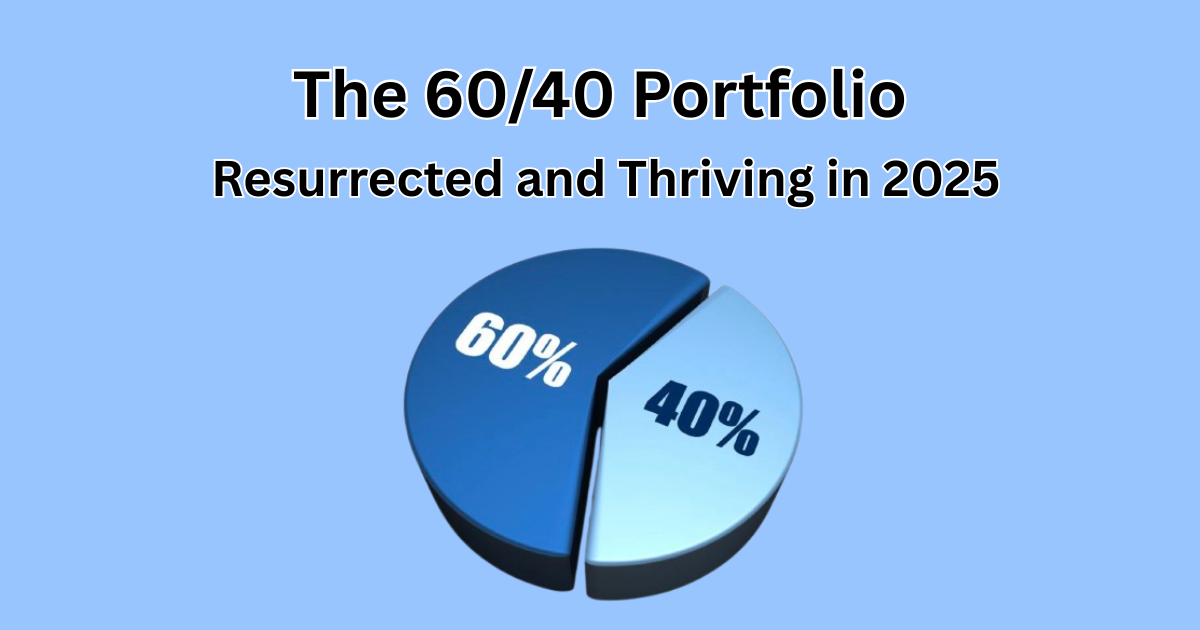
Get Your Free ChatGPT Productivity Bundle
Mindstream brings you 5 essential resources to master ChatGPT at work. This free bundle includes decision flowcharts, prompt templates, and our 2025 guide to AI productivity.
Our team of AI experts has packaged the most actionable ChatGPT hacks that are actually working for top marketers and founders. Save hours each week with these proven workflows.
It's completely free when you subscribe to our daily AI newsletter.

Welcome to The Profit Zone 👋
Where thousands of millionaires, CEO’s and high-performing entrepreneurs read the #1 financial newsletter on the web.


👉 Guess Who’s Back, Back Again: Hint… The Market 🤫
👉 The 1% Rule: High-Risk Bets for Young Investors 💸
👉 My Risky Bets: Taking Back The Curtain 🫰
👉 Beehiiv: Start A Newsletter That Pays You to Write About Your Passions 📔


“The longer you can extend your time horizon the less competitive the game becomes, because most of the world is engaged over a very short time frame.”


Guess Who’s Back, Back Again

April 2025, the month when the S&P 500 fell by 19% from its peak after Trump imposed a 10% tariff on all imports and higher reciprocal tariffs on certain countries.
This marked the point when Wall Street analysts, who feared an economic slowdown, slashed their 2025 S&P 500 price targets, with some even predicting negative returns for the year.
Firms like Goldman Sachs, UBS, and HSBC (now RBC) cut forecasts significantly, due to potential corporate earnings declines.
However market optimism returned, when Trump paused harsher tariffs and a May 28, 2025 court ruling that questioned the legality of his actions.
The S&P 500 has since recovered to ~5,900, up 23% since its April low and up 0.74% YTD.
Due to the court ruling, analysts like Goldman Sachs and Yardeni Research raised their targets, showing increased optimism.
If we take a step back and zoom out through history, market volatility is part of the game. It’s the price of admission you pay if you want to invest in stocks. The market will typically experience a correction every 2.5 years and a bear market every 6 years.
Investors have seen 4 bear markets over the last 25 years alone, triggered by the bursting of the dot-com internet bubble in 2000, the global financial crisis in 2008, the COVID-19 pandemic in 2020, and the inflation surge in 2022.
The S&P 500 went on to make new record highs every single time.
My advice to you:
Stay the course and focus on the long term goal. Take advantage of sell-offs in the market, they’re buying opportunities.
Don’t panic because of “noise”. And let me tell you… tariffs have been nothing but “noise”.
All of the panic, all of the fear, and all of the pessimism is overstated (in my opinion).
Fundamentally strong companies will always find a way to rebound from barriers in the market, like tariffs.
This is why why I decided to start The Profit Academy. To help you understand why you shouldn’t panic.
I do the analysis, I show you the intrinsic value and growth metrics, and I provide you with the stocks.
But if your goal is to continue underperforming the market year after year, then skip to the next section.
If you want deep stock analysis, backed with strong conviction from someone who analyzes stocks in their free time (so you don’t have to) then click here and join premium, with free access to my community The Profit Academy.
All for less than what you’ll spend on your phone bill this month.
The price will double again when the next 25 members join.


The 1% Rule: High-Risk Bets for Young Investors
Welcome to this week’s Profit Zone free newsletter!
Today we’re diving into the 1% Rule.
A strategy by which young investors allocate 1% of their portfolios to speculative investments like cryptocurrencies or startups, helping to balance potential rewards with long-term stability.
Why the 1% Rule?
When you’re a young investor, you have something that older investors don’t have: time ⌛
When you have time, you can experiment with higher-risk assets because if things go south, you have more time to recover. Plus, younger investors typically have less money, making financial mistakes less expensive.
The 1% Rule also offers a low-stakes way to learn the markets while you protect your core investments. Sometimes the greatest lessons are learned when you lose money. And losing money is always on the table when experimenting with riskier investments.
Historical Evidence - 1% Allocation
Historical data underscores the power of small, speculative bets.
Lets talk crypto for a second.
In 2013, Bitcoin traded around $100.
A $100 investment (1% of a $10,000 portfolio) would have bought you 1 Bitcoin at that time. That $100 would have grown to about $15,000 by 2017’s peak. In 4 years, you would have made ~14,900 off a $100 investment.
Of course these scenario’s are few and far between, but its interesting to see what a small 1% allocation can grow into if you find the right asset.
Venture capital offers another example.
In 2004, early Uber investors put in small sums via angel platforms.
A $1,000 stake (1% of a $100,000 portfolio) in Uber’s seed round yielded millions by its 2019 IPO.
Most startups fail, that’s no secret, but the 1% Rule ensures that those failures don’t wipe you out.
For example, During the dot-com bubble burst, investor losses were estimated to be around $5 trillion by 2002.
This loss was primarily due to the collapse of many internet-based companies and the quick decline of the Nasdaq index.
The Nasdaq saw close to a 77% drop, erasing a significant portion of its gains during the bubble's peak. Yikes.
How to Implement the 1% Rule
Set the Limit: Cap speculative bets at 1% of your portfolio. For a $20,000 portfolio, that’s $200. Don’t go over this. Set your limit and play within it.
Diversify the Slice: Spread your 1% across assets. For example: $100 in crypto and $100 in a small cap startup. Diversification also applies to riskier choices.
Research Thoroughly: Avoid hype-driven choices. That’s all I’ll say on that topic.
Protect the Core: Keep 80-90% in stable assets like ETFs, blue chip stocks or large cap stocks. If you have a strong base, it should help you sleep well at night. DO NOT allocate money to riskier assets without a solid foundation.
Learn from Outcomes: View losses as market education and lessons. Gains are just bonuses.
Lower Your Expectation: Don’t go into this thinking you’re going to become a millionaire overnight, because it won’t happen. If your expectation is too high, you’ll get crushed when reality doesn’t align with your goal.
My Risky Bets:
I’m an investor in my late 20’s and have a long time horizon (30+ years) so I’ve been implementing this 1% rule myself.
For me, my risky allocation is towards a crypto asset called Solana (yes, I also buy crypto, it’s called balance).
I hold about $2,500 amounting to ~11 coins.
If the value of Solana were to go to zero, it doesn’t wipe me out.
If the value were to 10x, I’d be one happy investor.
I don’t check the price on a daily basis because it would drive me crazy.
I just buy it, stake it (earn interest on my position) and forget about it.
If you’re a Canadian investor, you can buy these coins directly on Wealthsimple, a platform I use for all of my investments/high yield savings accounts.
Register here and get a free pair of AirPods if you transfer $25,000 or more. What a deal!
Until next week.




Did you enjoy this newsletter?


Launch Your Newsletter with Beehiiv—From Home!
Turn your passion into profit with Beehiiv, the ultimate platform for newsletter creators. Build, grow, and monetize, all from the comfort of your own home.
Monetize: Join Beehiiv’s Ad Network, the largest for newsletters, connecting you with sponsors like Netflix and The Morning Brew. Earn $2-$3 per subscriber via Boosts. In 2023, a newsletter called Side Hustle Nation made over $200,000.
Boost Growth: Fund your Beehiiv wallet to promote your newsletter through Boosts. Funds never expire, offering flexible growth. Get your content in front of more eyes.
Brand Your Way: Create fully customizable, SEO-friendly websites and newsletter templates to match your brand. No coding needed.
Data-Driven Success: Use Beehiiv’s Analytics to track open rates, clicks, and growth, optimizing engagement and revenue.
Start Free: Sign up here and start your newsletter for FREE for your first 2,500 subscribers. If you already have a newsletter and want to transfer your existing subscribers, the process is as simple as it gets.
More then 2,500 subscribers? Get 20% OFF your first 3 months using the link here.
BONUS: if you sign up using the above links, send me a message on X or email me ([email protected]) with the email you used to sign up, and I’ll give you some free tips on how to start, build, grow and monetize your newsletter, from someone who has been doing this for 5+ years.


Disclaimer: The publisher does not guarantee the accuracy or completeness of the information provided in this page. All statements and expressions herein are the sole opinion of the author or paid advertiser.
Dividend Domination Inc. is a publisher of financial information, not an investment advisor. We do not provide personalized or individualized investment advice or information that is tailored to the needs of any particular recipient.
THE INFORMATION CONTAINED ON THIS WEBSITE IS NOT AND SHOULD NOT BE CONSTRUED AS INVESTMENT ADVICE, AND DOES NOT PURPORT TO BE AND DOES NOT EXPRESS ANY OPINION AS TO THE PRICE AT WHICH THE SECURITIES OF ANY COMPANY MAY TRADE AT ANY TIME. THE INFORMATION AND OPINIONS PROVIDED HEREIN SHOULD NOT BE TAKEN AS SPECIFIC ADVICE ON THE MERITS OF ANY INVESTMENT DECISION. INVESTORS SHOULD MAKE THEIR OWN INVESTIGATION AND DECISIONS REGARDING THE PROSPECTS OF ANY COMPANY DISCUSSED HEREIN BASED ON SUCH INVESTORS’ OWN REVIEW OF PUBLICLY AVAILABLE INFORMATION AND SHOULD NOT RELY ON THE INFORMATION CONTAINED HEREIN.
Any projections, market outlooks or estimates herein are forward-looking statements and are inherently unreliable. They are based upon certain assumptions and should not be construed to be indicative of the actual events that will occur. Other events that were not taken into account may occur and may significantly affect the returns or performance of the securities discussed herein. The information provided herein is based on matters as they exist as of the date of preparation and not as of any future date, and the publisher undertakes no obligation to correct, update or revise the information in this document or to otherwise provide any additional material.
The publisher, its affiliates, and clients of the publisher or its affiliates may currently have long or short positions in the securities of the companies mentioned herein or may have such a position in the future (and therefore may profit from fluctuations in the trading price of the securities). To the extent such persons do have such positions, there is no guarantee that such persons will maintain such positions.
Neither the publisher nor any of its affiliates accept any liability whatsoever for any direct or consequential loss howsoever arising, directly or indirectly, from any use of the information contained herein.
By using the Site or any affiliated social media account, you are indicating your consent and agreement to this disclaimer and our terms of use. Unauthorized reproduction of this newsletter or its contents by photocopy, facsimile or any other means is illegal and punishable by law.





